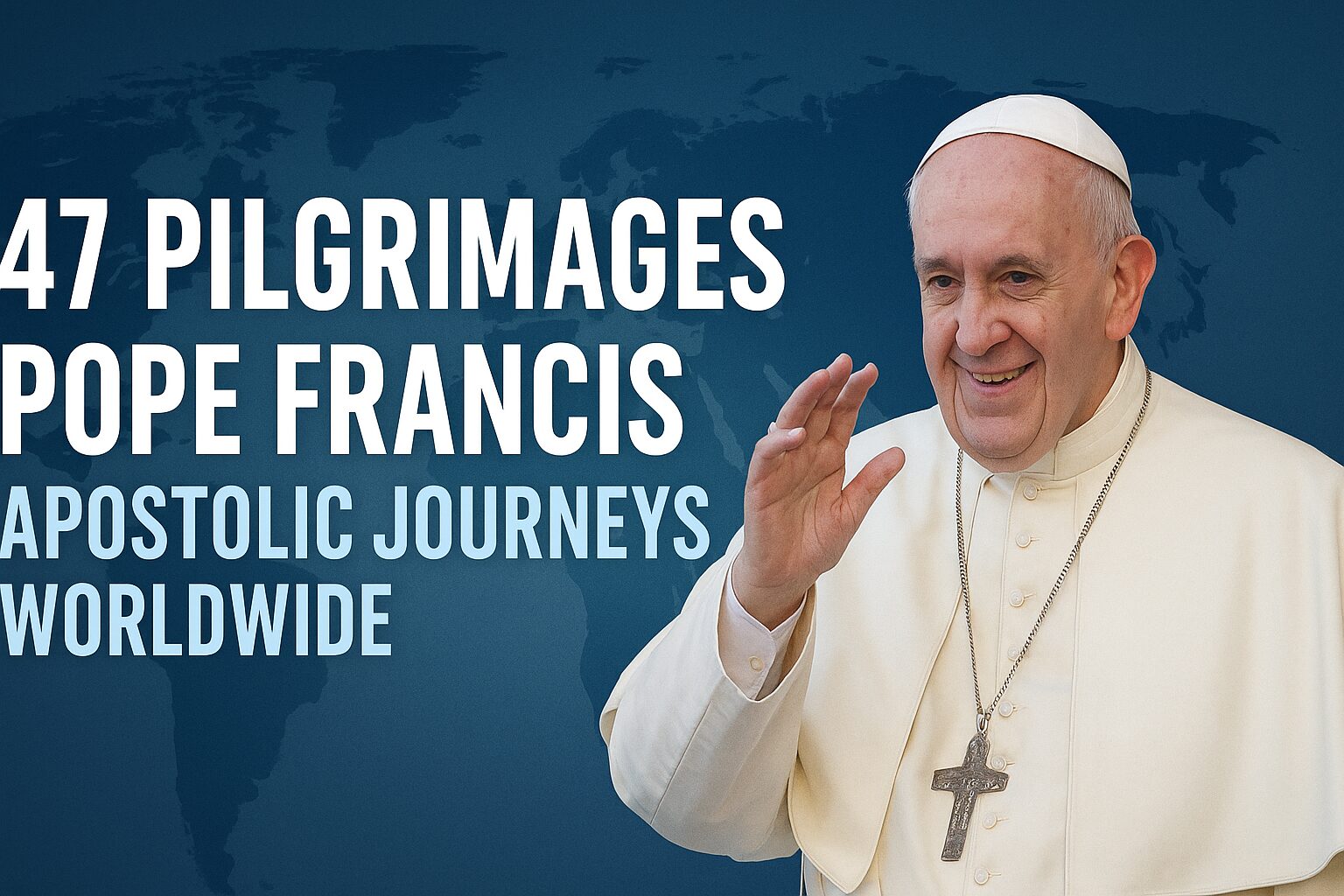Introduction
Pope Francis Pilgrim Apostolic Journeys have spanned 47 international trips over his 12‑year pontificate, taking Jesus’s message of closeness to every corner of the earth. From Lampedusa to Mongolia, he’s modeled a faith that meets people where they are.
Why These Journeys Matter
Each pilgrimage reflects Pope Francis’s core belief: the Church must go to the peripheries and encounter people in their struggles and hopes. By visiting 68 countries and nearly every continent, he gave flesh to the Gospel’s call to compassion and solidarity.
A Global Mission of Mercy
He wasn’t content with formal welcomes. In every country, he sought out communities on the margins—migrants in Lampedusa, children with disabilities in Timor‑Leste, and refugees in South Sudan. Each stop became a living sermon on closeness and care.
1. Setting the Tone on the Plane
Long before landing, Pope Francis begins his ministry of presence: he walks the aisles, greets journalists, and chats with crew members. This gesture of warmth on flights to Brazil in 2013 and beyond broke down barriers and built down‑to‑earth relationships.
2. A Symbolic First Stop: Lampedusa
His very first outing was to Lampedusa, a tiny island at Europe’s doorstep that welcomes countless migrants fleeing violence and poverty. By choosing a local landing zone over a grand capital, he highlighted the plight of the displaced and made a global statement on mercy and solidarity.
3. Embracing the Peripheries
Pope Francis Pilgrim Apostolic Journeys consistently prioritized the forgotten:
– He walked muddy roads in war‑torn South Sudan.
– He met indigenous tribes in Papua New Guinea after days of treacherous travel.
– He braved a typhoon in the Philippines to stand by survivors.
These visits demonstrated that no distance or difficulty can deter the Church from its mission.
4. First Pope to Visit Iraq
In March 2021, he became the first pope ever to set foot in Iraq, despite pandemic and security concerns. Meeting the Grand Ayatollah in Najaf, he underscored interfaith dialogue and peace in a land torn by conflict.
5. Calls for Justice, Peace, and Inclusion
Every capital city became a pulpit for social teaching. In Belgium, he urged leaders to build bridges to peace. In Bolivia’s high altitudes, he spoke against inequality and division. His pilgrimages weren’t mere visits—they were platforms for truth, justice, and reconciliation.
6. Moments of Joy
After formal ceremonies, he often shared simple joys:
– Delighting in handmade gifts from children.
– Laughing at local songs and dances.
– Embracing crowds in open‑air jeeps rather than armored vehicles.
Through these moments, he reminded the world that faith lives in joy and gratitude.
7. Lessons for Today
His 47 journeys teach practical lessons:
1. Be present—closeness matters more than ceremony.
2. Listen first—true dialogue starts by hearing others’ stories.
3. Stand with the marginalized—every person reflects Jesus’s face.
4. Speak truth—love demands justice, even to those in power.
Conclusion
Pope Francis Pilgrim Apostolic Journeys show faith in motion. He walked, listened, and spoke, bringing Jesus’s closeness to all.
For more on this and other developments, visit our News page.
For broader background on Vatican apostolic travel, see:
– https://www.vatican.va



